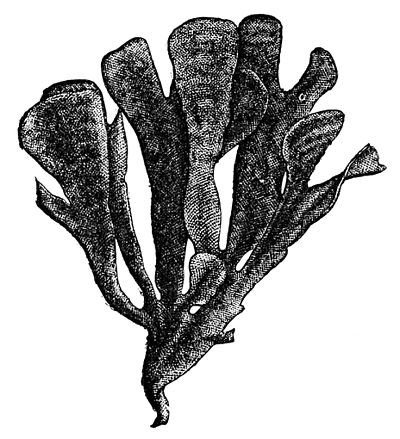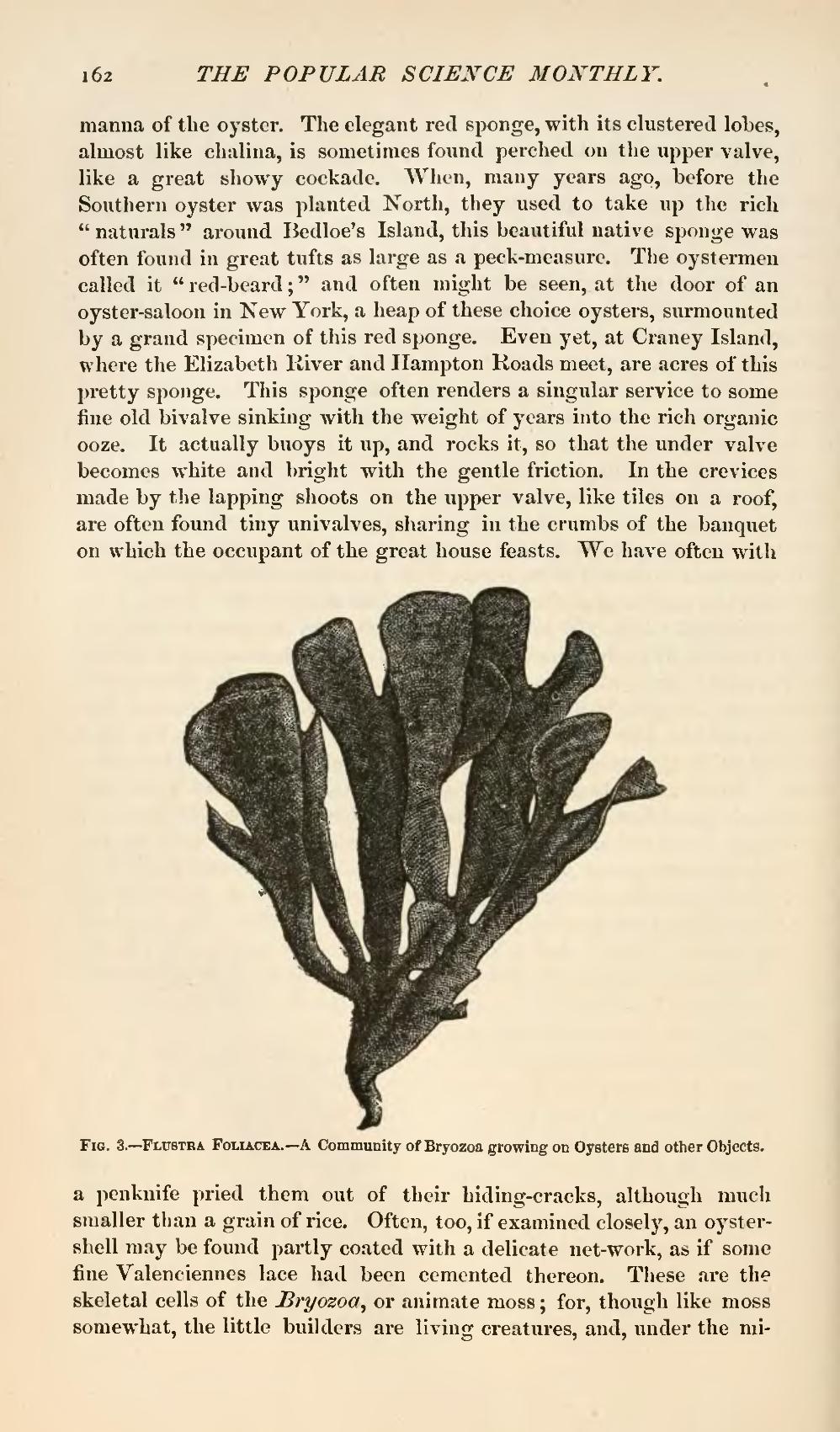manna of the oyster. The elegant red sponge, with its clustered lobes, almost like chalina, is sometimes found perched on the upper valve, like a great showy cockade. When, many years ago, before the Southern oyster was planted North, they used to take up the rich "naturals" around Bedloe's Island, this beautiful native sponge was often found in great tufts as large as a peck-measure. The oystermen called it "red-beard;" and often might be seen, at the door of an oyster-saloon in New York, a heap of these choice oysters, surmounted by a grand specimen of this red sponge. Even yet, at Craney Island, where the Elizabeth River and Hampton Roads meet, are acres of this pretty sponge. This sponge often renders a singular service to some fine old bivalve sinking with the weight of years into the rich organic ooze. It actually buoys it up, and rocks it, so that the under valve becomes white and bright with the gentle friction. In the crevices made by the lapping shoots on the upper valve, like tiles on a roof, are often found tiny univalves, sharing in the crumbs of the banquet on which the occupant of the great house feasts. We have often with

Fig. 3.—Flustra Foliacea.—A Community of Bryozoa growing on Oysters and other Objects.
a penknife pried them out of their hiding-cracks, although much smaller than a grain of rice. Often, too, if examined closely, an oyster-shell may be found partly coated with a delicate network, as if some fine Valenciennes lace had been cemented thereon. These are the skeletal cells of the Bryozoa, or animate moss; for, though like moss somewhat, the little builders are living creatures, and, under the mi-

